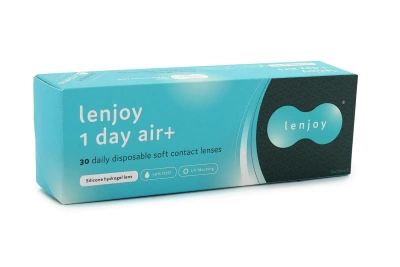Myopia (shortsightedness): Symptoms and treatment

All forms of visual impairment are unpleasant and restricting. However, with the help of contact lenses and glasses, you can manage most of your everyday life activities without problems.
As part of a series on the different types of visual conditions, Lentiamo wants to inform you on impairments such as farsightedness (hyperopia), presbyopia and astigmatism.
Today we are focusing on myopia, also known as shortsightedness.
What is myopia?
Myopia is a common visual impairment in which nearby objects can be seen clearly, but objects in the distance are blurred. It occurs when the shape of your eye causes the light rays to bend (break) incorrectly and focus images in front of the retina instead of on the retina.
It is the most common cause of vision problems in people under 40 years of age.
If you see objects close up sharply, so you don't have a problem reading small print, but see things blurred in the distance, you're probably shortsighted. Your eyes suffer from a condition called myopia.
Myopia can develop more or less gradually and often worsens during childhood and adolescence. It also tends to be inherited.
Myopia symptoms
Symptoms of myopia include blurry vision when looking at distant objects, the need to squint or partially close eyes to see more clearly, and eventually headaches may be caused by eyestrain.
However, myopia is often detected at first during childhood. If you're wondering whether your child suffers from myopia, pay attention to the symptoms below.
If your child:
- persistently squints
- needs to sit closer to the TV or needs to be placed in the front of the classroom at school
- cannot detect remote objects
- blinks excessively
- rubs her or his eyes frequently
they could be short-sighted.
Note: If you detect any of these symptoms in your child, please see an eye doctor or optometrist to give them an eye test. They will find appropriate contact lenses or glasses for you child.
Myopia causes
Myopia occurs when the eyeball is too long and doesn't support the focusing power of the cornea and lens. Thus the light rays focus on a point in front of the retina and not directly on its surface.
Myopia can also be caused by the cornea and/or lens being too curved for the length of the eyeball. In some cases, myopia is caused by a combination of these factors.
Find suitable contact lenses for myopia:
How is myopia treated?
In Ireland, you can correct myopia with contact lenses, glasses or refractive surgery such as LASIK.
Contact lenses provide optimal visual acuity, even with severe myopia. After the refractive power of your eye and your corneal surface have been measured, your eye doctor or optometrist selects the appropriate contact lens for your eye from various contact lens types in order to correct it. If you follow the lenses' care instructions and have regular check-ups, you can wear contact lenses for a long time without any problems.
Concave contact lenses are the best way to treat myopia. They work by bending the light rays slightly outwards so that they can concentrate further back onto the retina. Prescriptions for concave contact lenses have a minus sign in front of the number. The further away the number is from zero, the higher the correction provided.
Visit your optician or eye doctor to take an eye test and order your eyewear at Lentiamo!














Comments